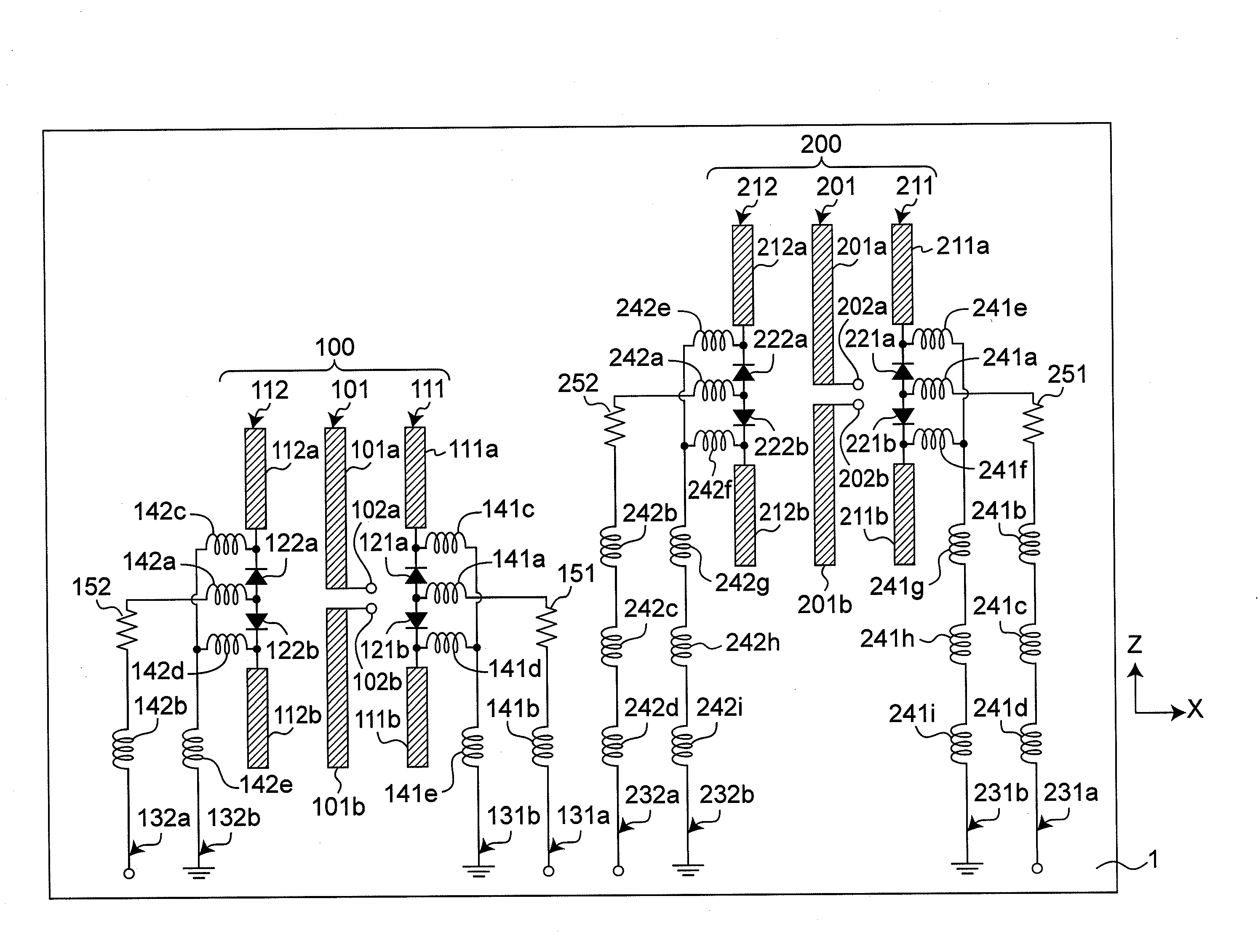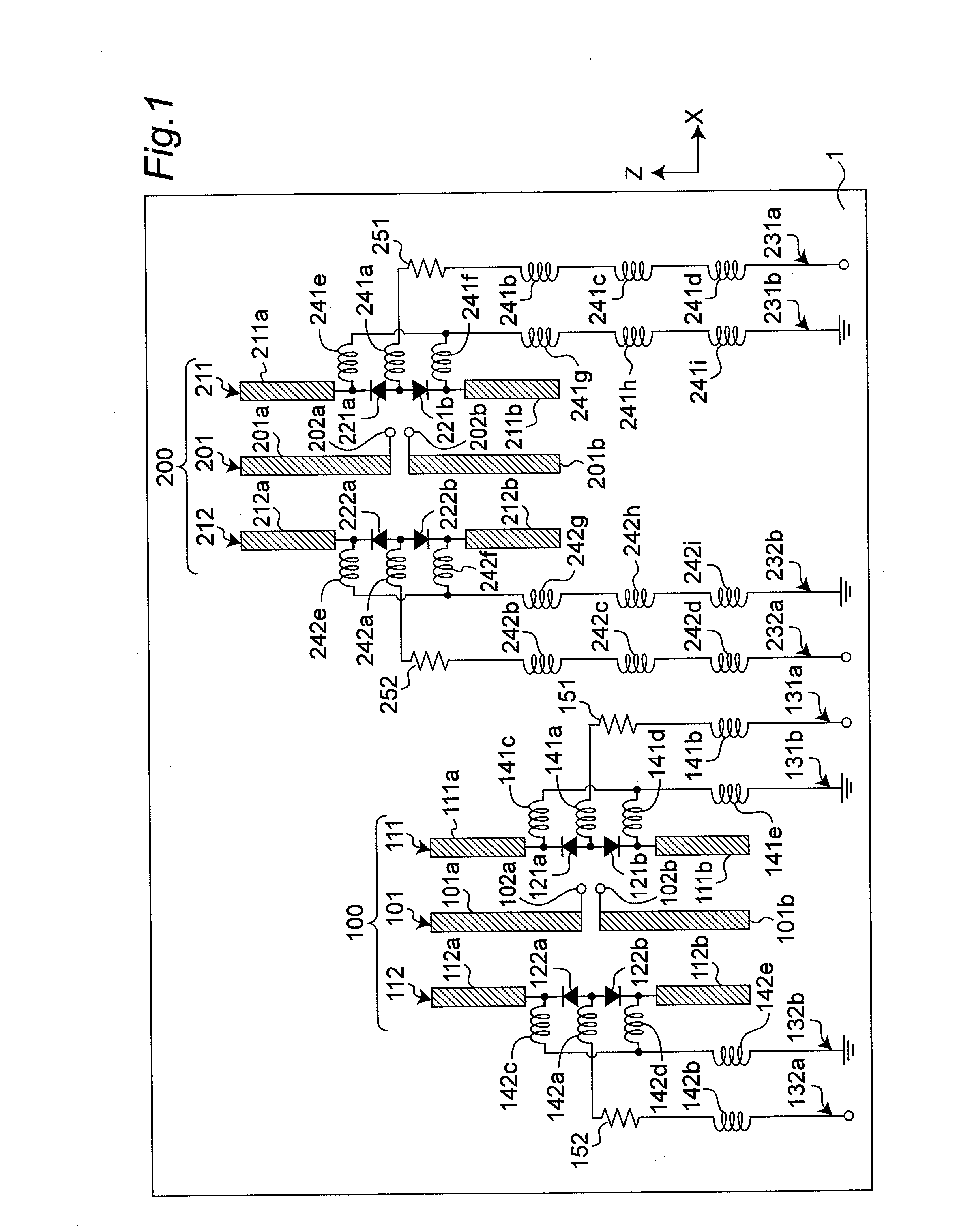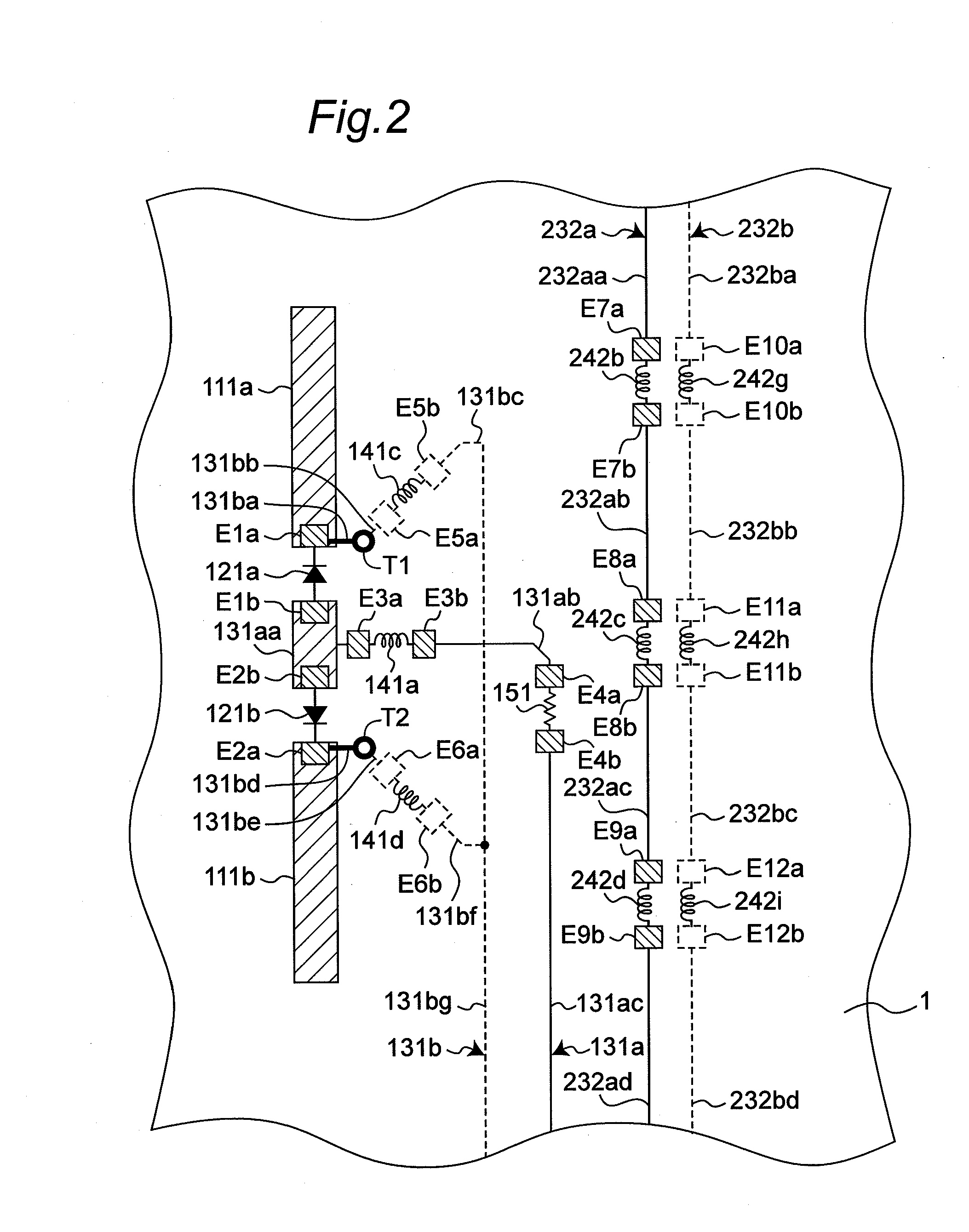Array antenna apparatus including multiple steerable antennas and capable of avoiding affection among steerable antennas
a technology of array antennas and steerable antennas, which is applied in the direction of antenna details, electrically short antennas, antennas, etc., can solve the problems of increasing the correlation between antenna elements and the degradation of transmission quality, and achieve the effect of preventing undesirable preventing resonances in the control lin
- Summary
- Abstract
- Description
- Claims
- Application Information
AI Technical Summary
Benefits of technology
Problems solved by technology
Method used
Image
Examples
first preferred embodiment
[0046]FIG. 1 is a plan view showing a schematic configuration of an array antenna apparatus according to a first embodiment of the present invention. FIG. 2 is a detailed view of a part of FIG. 1 in phantom. An array antenna apparatus according to the present embodiment includes two sets of steerable antennas 100 and 200 on a printed wiring board 1. Note that the XYZ coordinate is used as shown in FIG. 1, and for a Y-axis, a direction from front to back of FIG. 1 is assumed to be a positive direction.
[0047]The steerable antenna 100 includes one half-wave dipole antenna element 101 as an radiating antenna element, and two parasitic antenna elements 111 and 112. The dipole antenna element 101 includes two strip radiating conductor elements 101a and 101b, each formed as a conductor pattern on the printed wiring board 1. The radiating conductor elements 101a and 101b oppose to each other with a space therebetween, and are located along a straight line. Feeding points 102a and 102b are r...
second preferred embodiment
[0060]FIG. 7 is a top view showing a schematic configuration of an array antenna apparatus according to a second embodiment of the present invention. FIGS. 8 to 10 are plan views respectively showing schematic configurations of printed wiring boards 1a, 1b, and 1c of FIG. 7. The array antenna apparatus according to an embodiment of the present invention is not limited to the one in which antennas are formed within a plane of one printed wiring board 1 as in the first embodiment, but may have a three dimensional configuration in which three or more parasitic antenna elements are provided so as to surround an radiating antenna element.
[0061]As shown in FIG. 7, an array antenna apparatus according to the present embodiment includes two sets of steerable antennas 100A and 200A, on the three printed wiring boards 1a, 1b, and 1c provided in parallel with each other. The steerable antenna 100A includes one half-wave dipole antenna element 101 as an radiating antenna element, and four paras...
PUM
 Login to View More
Login to View More Abstract
Description
Claims
Application Information
 Login to View More
Login to View More - R&D
- Intellectual Property
- Life Sciences
- Materials
- Tech Scout
- Unparalleled Data Quality
- Higher Quality Content
- 60% Fewer Hallucinations
Browse by: Latest US Patents, China's latest patents, Technical Efficacy Thesaurus, Application Domain, Technology Topic, Popular Technical Reports.
© 2025 PatSnap. All rights reserved.Legal|Privacy policy|Modern Slavery Act Transparency Statement|Sitemap|About US| Contact US: help@patsnap.com



